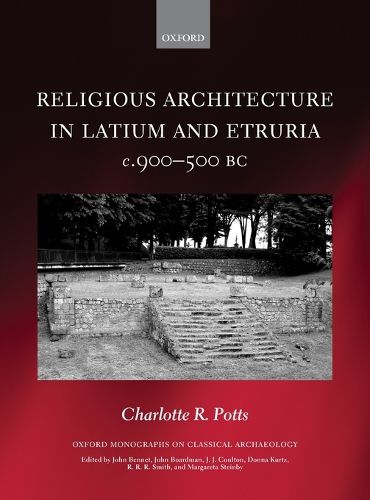Readings Newsletter
Become a Readings Member to make your shopping experience even easier.
Sign in or sign up for free!
You’re not far away from qualifying for FREE standard shipping within Australia
You’ve qualified for FREE standard shipping within Australia
The cart is loading…






Religious Architecture in Latium and Etruria c. 900-500 BC presents the first comprehensive treatment of cult buildings in western central Italy from the Iron Age to the Archaic Period. By analysing the archaeological evidence for the form of early religious buildings and their role in ancient communities, it reconstructs a detailed history of early Latial and Etruscan religious architecture that brings together the buildings and the people who used them.
The first part of the study examines the processes by which religious buildings changed from huts and shrines to monumental temples, and explores apparent differences between these processes in Latium and Etruria. The second part analyses the broader architectural, religious, and topographical contexts of the first Etrusco-Italic temples alongside possible rationales for their introduction. The result is a new and extensive account of when, where, and why monumental cult buildings became features of early central Italic society and set precedents for the great temples of republican Rome.
$9.00 standard shipping within Australia
FREE standard shipping within Australia for orders over $100.00
Express & International shipping calculated at checkout
Religious Architecture in Latium and Etruria c. 900-500 BC presents the first comprehensive treatment of cult buildings in western central Italy from the Iron Age to the Archaic Period. By analysing the archaeological evidence for the form of early religious buildings and their role in ancient communities, it reconstructs a detailed history of early Latial and Etruscan religious architecture that brings together the buildings and the people who used them.
The first part of the study examines the processes by which religious buildings changed from huts and shrines to monumental temples, and explores apparent differences between these processes in Latium and Etruria. The second part analyses the broader architectural, religious, and topographical contexts of the first Etrusco-Italic temples alongside possible rationales for their introduction. The result is a new and extensive account of when, where, and why monumental cult buildings became features of early central Italic society and set precedents for the great temples of republican Rome.